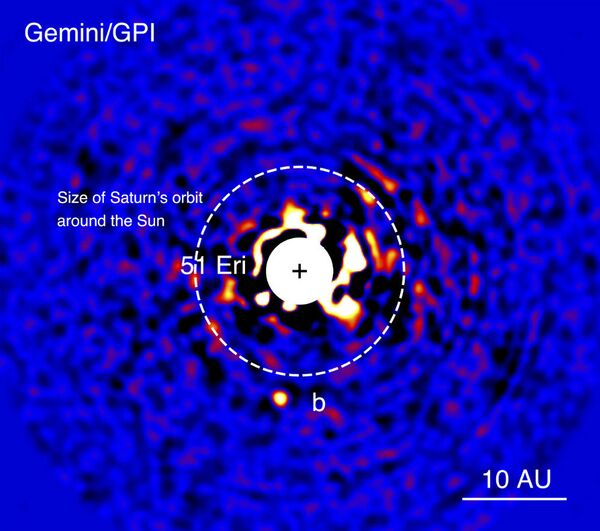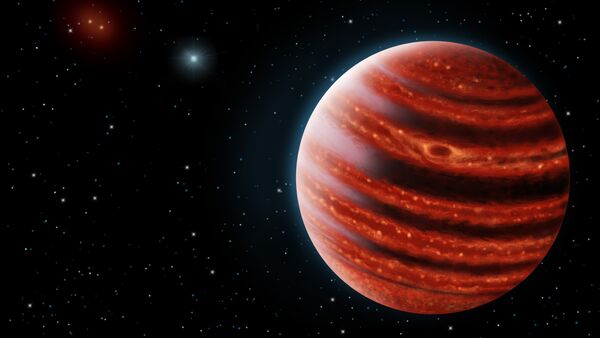The planet, called 51 Eridani b (51 Eri b), is the first detected by the Gemini Planet Imager (GPI), a high-contrast imaging instrument installed at the Gemini South Telescope in Chile last year and operated by an international team of researchers.
Chilean Star Trails to the Max! Image by Manuel Parades at the Gemini South Telescope on Cerro Pachón. pic.twitter.com/iqBZbUeUHu
— Gemini Observatory (@GeminiObs) July 4, 2014
Unlike the Kepler observatory, which detects planets by finding their shadow, GPI searches for young stars in order to detect self-luminous planets in their orbits with the help of a near-infrared integral field spectrograph.
“This is exactly the kind of system we envisioned discovering when we designed GPI,” University of California, Berkeley professor and project scientist James Graham said, commenting on the Gemini Planet Imager’s first discovery.
What has 2 disks, a 2 jupiter mass planet, discovered by @PlanetImager and looks like the Solar System? 51 Eri! https://t.co/6xKjHDtUGC
— Rahul I. Patel (@RIPatel_Astro) August 13, 2015
The newly found exoplanet is orbiting around the star 51 Eri, one of the youngest stars located so near to our sun, presenting a perfect arena for imaging young planets, a co-author of the study, Eric Nielsen, told the Stanford News.

The planet, around 100 light-years away from Earth, appears to be a lot like a young Jupiter in our Solar System. The study, published in the journal Science, shows the former is twice as heavy as the latter – which is at least two times less than any previously discovered exoplanets. The histories of 51 Eridani b and Jupiter are similar, too.
“This planet also has a sufficiently low luminosity to be consistent with the ‘cold-start’ core accretion process that may have formed Jupiter,” the study says.
The temperature of the planet is 800 degrees Fahrenheit (426 Celsius), whereas all other known exoplanets are as hot as 1200 Fahrenheit (649 Celsius), and it’s been observed to have a much higher record of atmospheric methane. The research team suggests all the described characteristics indicate 51 Eri b in its current state is pretty much like Jupiter in its “childhood.”
“Many of the exoplanets astronomers have imaged before have atmospheres that look like very cool stars,” said Stanford physics Professor Bruce Macintosh, the chief investigator with GPI. “This one looks like a planet.”
51 Eri b was born “just” 20 million years ago – 40 million years after the dinosaurs went extinct on Earth. This young – by cosmic standards – age allowed for the planet to be detected directly by the GPI instrument.
“Once the astronomers zeroed in on the star, they blocked its light and spotted light reflecting off 51 Eridani b, orbiting a little farther away from its parent star than Saturn does from the sun. The light from the planet is very faint – more than 3 million times fainter than its star – but GPI can see it clearly,” Stanford News reported.
Scientists say the discovery may shed light into our own Solar System’s history by offering insights into how planets are formed in our galaxy.


